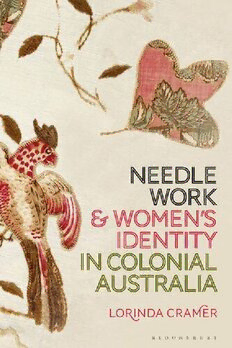
Needlework and Women’s Identity in Colonial Australia PDF
265 Pages·2020·3.602 MB·English
Most books are stored in the elastic cloud where traffic is expensive. For this reason, we have a limit on daily download.
Preview Needlework and Women’s Identity in Colonial Australia
Description:
In gold-rush Australia, social identity was in flux: gold promised access to fashionable new clothes, a grand home, and the goods to furnish it, but could not buy gentility. Needlework and Women’s Identity in Colonial Australia explores how the wives, mothers, sisters, and daughters who migrated to the newly formed colony of Victoria used their needle skills as a powerful claim to social standing.Focusing on one of women’s most common daily tasks, the book examines how needlework’s practice and products were vital in the contest for social position in the turmoil of the first two decades of the Victorian rush from 1851. Placing women firmly at the center of colonial history, it explores how the needle became a tool for stitching together identity. From decorative needlework to household making and mending, women’s sewing was a vehicle for establishing, asserting, and maintaining social status.Interdisciplinary in scope, Needlework and Women’s Identity in Colonial Australia draws on material culture, written primary sources, and pictorial evidence, to create a rich portrait of the objects and manners that defined genteel goldfields living. Giving voice to women’s experiences and positioning them as key players in the fabric of gold-rush society, this volume offers a fresh critical perspective on gender and textile history.It was men who starred in the rush to be rich on the goldfields of Australia’s newly formed colony of Victoria, and they poured into the colony from 1851 with the dream of making a fortune. Women too formed part of this wave of migration to the Victoria—though their story is less well known. In the confusion of the new colony gold alone could not buy social status, and the behaviors of wives, mothers, sisters, and daughters were a powerful claim to gentility. In Needlework and Women’s Identity in Colonial Australia [working title] Lorinda Cramer focuses attention on sewing, one of the most common daily tasks for women in the nineteenth century, to explore how its practices and products were vital in the contest for social position in the turmoil of the first two decades of the rush. Drawing together surviving material culture and a rich array of written and pictorial primary sources, Cramer places women at the center of colonial history in her analysis of the objects and behaviors that could realize identity against the chaos of goldfields living. From the decorative needlework that adorned homes and husbands, the utilitarian sewing of household linens and underclothing, to making, mending, or refashioning their own clothing or that of their family, women’s sewing made valuable statements. Cramer establishes how needlework was a vehicle for asserting or maintaining social status, revealing how the impact of this domestic practice resonating far beyond the walls of the home.
See more
The list of books you might like
Most books are stored in the elastic cloud where traffic is expensive. For this reason, we have a limit on daily download.
